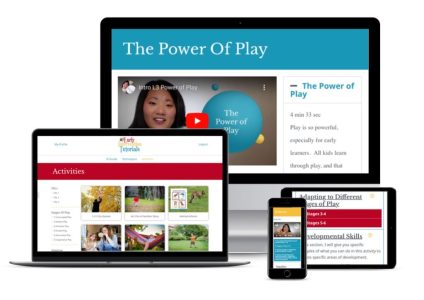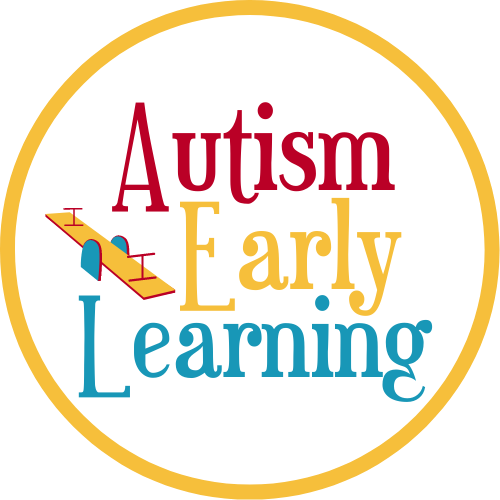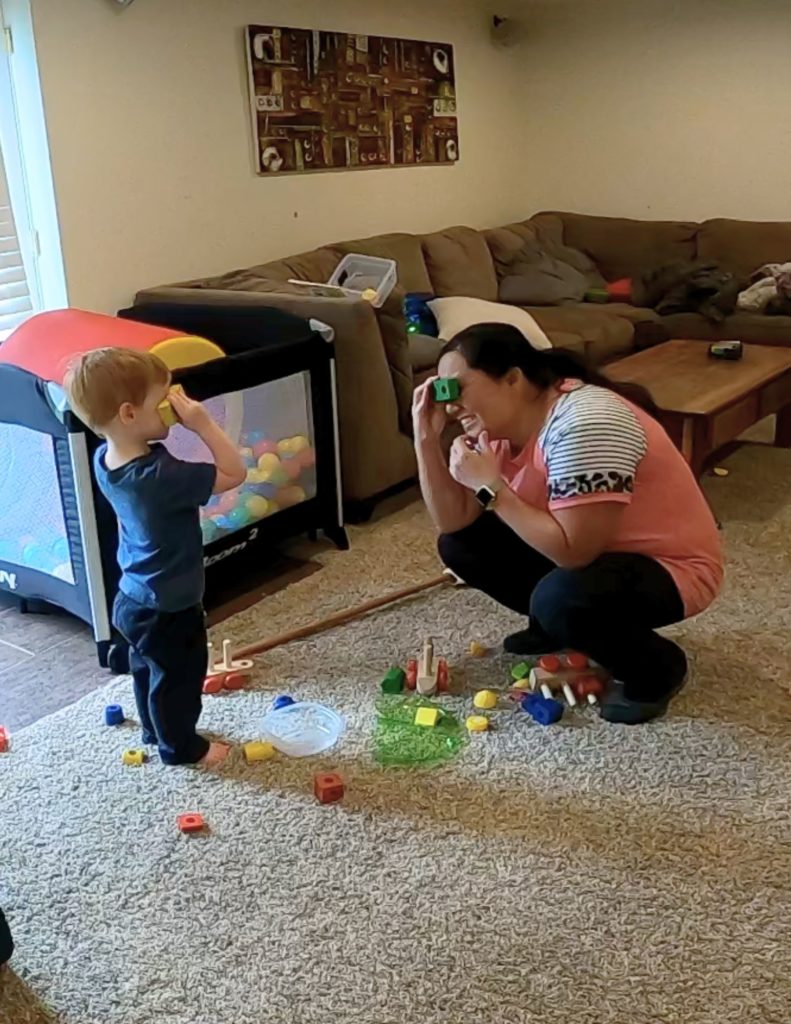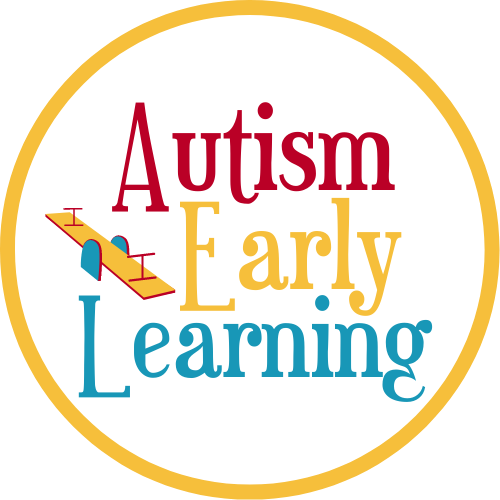Early intervention is all about giving extra help and support to a child that has developmental delays. Every child is different and needs different supports. It’s important to be aware of where the child is developmentally so that you can help in the best way possible.
For today I’m going to primarily focus on kids that are participating in associative play and/or cooperative play.
You can obviously still play with a flashlight with kids who are at stages 1-4 of play, but the play will be different than what I’m going to focus on today. For kids at stages 1-4, I would focus on cause and effect play. On and off. One little game I like to play is turning the flashlight on and off and singing to the tune of London Bridges “Lights go on and lights go off, lights go on, lights go off. Lights go on and lights go off, on and off!”
When a child is participating in associative and cooperative play, it generally means that the child is able to have continuous back and forth (circles of communication) interactions with others. They are also at a stage where they can follow some mutli-step directions, and are able to answer some questions.
Most of the activities I’ll be suggesting are on the premise that the child you’re playing with is able to do those things. It’s always important to make sure you’re playing at the right level if you want the most progress. If things are too easy or too difficult you won’t see as much growth. If you’d like to learn more about how to determine where your child is developmentally, I go into this more in depth in the Parent E-course (it’s catered towards parents, but it would work for educators too).
The first game is a simple game of I-spy. I know that you may or may not live in the United States, and this may not be a familiar game, so I’m going to briefly explain it.
I-Spy
- One person thinks about an object in the room and the others have to guess what it is
- The first person will say “I spy with my little eye (or light in this game), something…(then the person gives one descriptive word. It could be a color, shape, size, texture, etc.)
- Then the other person/people start making guesses by shining their light on objects in the room.
- If your child is working on receptive language skills, this game is perfect. If your child is working on recognizing the color green, then make sure that when you play, you spy something green. Then your child has so many opportunities to identify green objects in the room by pointing to them in the room.
- If your child is working on expressive language, this is also great. If your child is working on naming colors, then when it’s your child’s turn, you can take the opportunity to guess the wrong things and see if your child will tell you what color it is instead.
- This game is also great for
- eye-hand coordination
- working memory
- perception and concept
- attention
Shine A Light Books
Another activity I wanted to share with you are these awesome books. They’re called Shine A Light Books. There are hidden pictures throughout the book that you have to shine a flashlight behind the page to discover what it is. Kids love it, and you can make it a fun interactive game as you read together. I’ll post links at the bottom so you can find them. These books are great for
- Literacy skills
- Receptive language
- Expressive language
- Predicting what comes next
- Working memory
- Attention
If you’d like more activity ideas and how to target specific developmental skills, you can purchase the full activity below.
Supplies
- Flashlight
Instructions
- Go in a semi dark/dark room to play
- Play a game of I-Spy with flashlights
- The first person says "I spy with my little light something...(give one descriptive word, it could be a color, shape, size, texture, etc.)
- The person guessing points to items with their flashlight to make their guess until they get it right
Extra Tips & Ideas
- You can play so many games with a flashlight, try to come up with your own
- Think of games your child is already great at playing, and see if you can add a flashlight to change it up a little
- I will share more games and activities in the Developmental Skills section where I'll show you how to target specific skills
Access The Full Tutorial

To gain full access to this tutorial and 70+ other activity and technique tutorials, become a member of The Early Intervention Tutorials
As a member of the EI Tutorials, you will learn how to:
- Identify a child’s developmental level
- Understand the stages of play
- Learn how to help a child with limited play skills
- Implement specific techniques to increase communication and engagement
- Adapt activities to different stages of development
- Target specific developmental skills, including: communication skills, cognitive skills, executive functioning, motor skills, social skills, and adaptive skills
Adapting to Different Stages of Play
Depending on a child’s stage of development, you’ll want to adapt this activity based on goals that would be appropriate for the child’s growth.
The stages of play are:
- Stage 1: Unoccupied Play
- Stage 2: Solitary Play
- Stage 3: Onlooker Play
- Stage 4: Parallel Play
- Stage 5: Associative Play
- Stage 6: Cooperative Play
I’ll share ideas on how to do this in the Early Intervention Tutorials. You can become a member and gain access to this tutorial by going to: https://autismearlylearning.com/ei-tutorials-info/
Developmental Skills
In this section, I’ll identify which areas of development this activity targets. I’ll also give some pointers on how to specifically target each area. You can become a member of the Early Intervention Tutorials by going to: https://autismearlylearning.com/ei-tutorials-info/
Download
- Printable Lesson Plan (only available in the Early Intervention Tutorials)
Links
As a Walmart affiliate, I earn from qualifying purchases at no cost to you.
I love the Shine-A-Light Books




